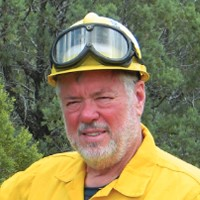Sustainable Water Resources Management under Growing Anthropic Demands and the Effects of Climate Change
A special issue of Sustainability (ISSN 2071-1050). This special issue belongs to the section "Environmental Sustainability and Applications".
Deadline for manuscript submissions: closed (31 March 2024) | Viewed by 29025
Special Issue Editors
Interests: sustainable water resources management; erosion control and land restoration; watershed hydrology
Special Issues, Collections and Topics in MDPI journals
Interests: hydrology; water resources management; hydrological modeling
Interests: watershed hydrology; water resources management; forest hydrology
Special Issues, Collections and Topics in MDPI journals
Special Issue Information
Dear Colleagues,
A significant portion of the global continental territory is quickly running out of water because of an excess of human consumption to satisfy the growing demands for agriculture, mining, industry, human consumption, etc., as well as because of the effects of climate change and inappropriate regional water resources management, making this vital element less available in many regions, with direct economic, social, and ecological consequences. This Special Issue focuses on what has been done to prevent, report, and/or mitigate water-scarcity-related problems, including:
- Regional water management/overuse;
- Water treatment/reuse/supply technologies;
- Water transportation/importation/storage in basins;
- Water efficiency;
- Watershed modeling and land use planning;
- Solutions to water-related conflicts;
- Climate change effects on water resources;
- Climate change adaptations;
- Water conservation education;
- Politics.
While some countries have already solved the issue, many regions have not done much and are only acting after the problem appears. This important Special Issue is intended to show examples of how different regions are experiencing/solving water scarcity problems, envisioning a more sustainable use of the resource and its preservation for future generations, with the hope that other regions will follow the examples.
Dr. Pablo A. Garcia-Chevesich
Dr. Rodrigo Valdes-Pineda
Dr. Daniel G. Neary
Dr. Héctor Novoa
Guest Editors
Manuscript Submission Information
Manuscripts should be submitted online at www.mdpi.com by registering and logging in to this website. Once you are registered, click here to go to the submission form. Manuscripts can be submitted until the deadline. All submissions that pass pre-check are peer-reviewed. Accepted papers will be published continuously in the journal (as soon as accepted) and will be listed together on the special issue website. Research articles, review articles as well as short communications are invited. For planned papers, a title and short abstract (about 100 words) can be sent to the Editorial Office for announcement on this website.
Submitted manuscripts should not have been published previously, nor be under consideration for publication elsewhere (except conference proceedings papers). All manuscripts are thoroughly refereed through a single-blind peer-review process. A guide for authors and other relevant information for submission of manuscripts is available on the Instructions for Authors page. Sustainability is an international peer-reviewed open access semimonthly journal published by MDPI.
Please visit the Instructions for Authors page before submitting a manuscript. The Article Processing Charge (APC) for publication in this open access journal is 2400 CHF (Swiss Francs). Submitted papers should be well formatted and use good English. Authors may use MDPI's English editing service prior to publication or during author revisions.
Keywords
- regional water management
- climate change adaptations
- water scarcity
- water efficiency
- water treatment technologies
- water conflicts
- water education
- environmental politics








